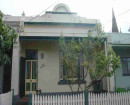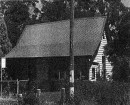Beeac Avenue of Honour
Coulstone Street and Wallace Street BEEAC, Colac Otway Shire
-
Add to tour
You must log in to do that.
-
Share
-
Shortlist place
You must log in to do that.
- Download report


Statement of Significance
-
-
Beeac Avenue of Honour - Historical Australian Themes
Memorials & Monuments (9.3)
Beeac Avenue of Honour - Physical Description 1
No. of trees: 36 Est. Age: 83 yrs (pl. c1917)
Ht: 8m Canopy: 8m
Trunk Circumference: 1.m
Spacing (Distance between trunks): 5mThe Avenue of Honour at Beeac comprises two converging avenues of Ulmus x hollandica* (Dutch Elm),
including 14 trees along Wallace Street (between Main and Coulston Streets) and 22 trees in Coulston
Street (between Wallace and Lang Streets). The trees are in excellent condition.
A further planting of note is the avenue on the main street of Beeac, comprising some 30 Cupressus
macrocarpa (Monterey Cypress), inconsistently spaced and pruned but remaining a strong landscape
element, and potentially being connected with the Avenue of Honour planting. However, this has not been
confirmed within the limits of the Study.
*Species should be confirmed when in leaf.Beeac Avenue of Honour - Physical Conditions
Excellent
Beeac Avenue of Honour - Integrity
Substantially intact
Veterans Description for Public
Beeac Avenue of Honour - Veterans Description for Public
The Beeac Avenue of Honour was planted in 1917 to commemorate the First World War. It comprises of two convergent avenues of thirty-six Dutch Elms (Ulmus x hollandica) on Wallace and Coulston Streets. The trees are approximately 8.0 m in height and trunk circumference is 1.0 m. The spacing between each tree is 5.0 m. The Beeac Avenue of Honour is important for its commemoration of the wartime service and sacrifices of the Beeac community, demonstrating the impact of the war on local communities.
In Australia, commemorative trees have been planted in public spaces since the late nineteenth century. Arbor Days were held regularly in most Victorian State Schools during the late 1800s and early 1900s, and numerous trees were planted in parks in Melbourne and throughout Victoria to mark the visits of important and famous people.
This tradition of commemorative planting was continued in 1901 when at the end of the Boer War trees were often planted for each soldier of the district who was killed in South Africa. These plantings, however, rarely consisted of more than two or three trees in each town.
During and after the First World War avenues of honour consisting of trees lining significant streets became a popular form of commemoration. They represented a new egalitarian approach to the commemoration of soldiers where rank was not a consideration: each tree symbolises a person.
Avenues of honour are a uniquely Australian phenomenon. Australians, and in particular Victorians, embraced the idea of planting them more enthusiastically than any other country in the world. The Eurack Avenue of Honour is the earliest known avenue of honour in Victoriawith planting commencing in May 1916.
By the time of the Second World War avenues of honour had declined in popularity as a means of commemoration. Today it is estimated that over 300 avenues of honour have been planted in Victoria to commemorate service personnel since 1901.
Heritage Study and Grading
Colac Otway - Colac Otway Heritage Study
Author: Mary Sheehan & Associates
Year: 2003
Grading: Local
-
-
-
-
-
Former St Andrew's Presbyterian Church
 National Trust
National Trust -
Wayside Pulpit & School
 National Trust
National Trust -
Beeac War Memorial
 Vic. War Heritage Inventory
Vic. War Heritage Inventory
-
1 Brockenshire Street
 Yarra City
Yarra City -
1 Bundara Street
 Yarra City
Yarra City -
1 Forster Street
 Hobsons Bay City
Hobsons Bay City
-
-












